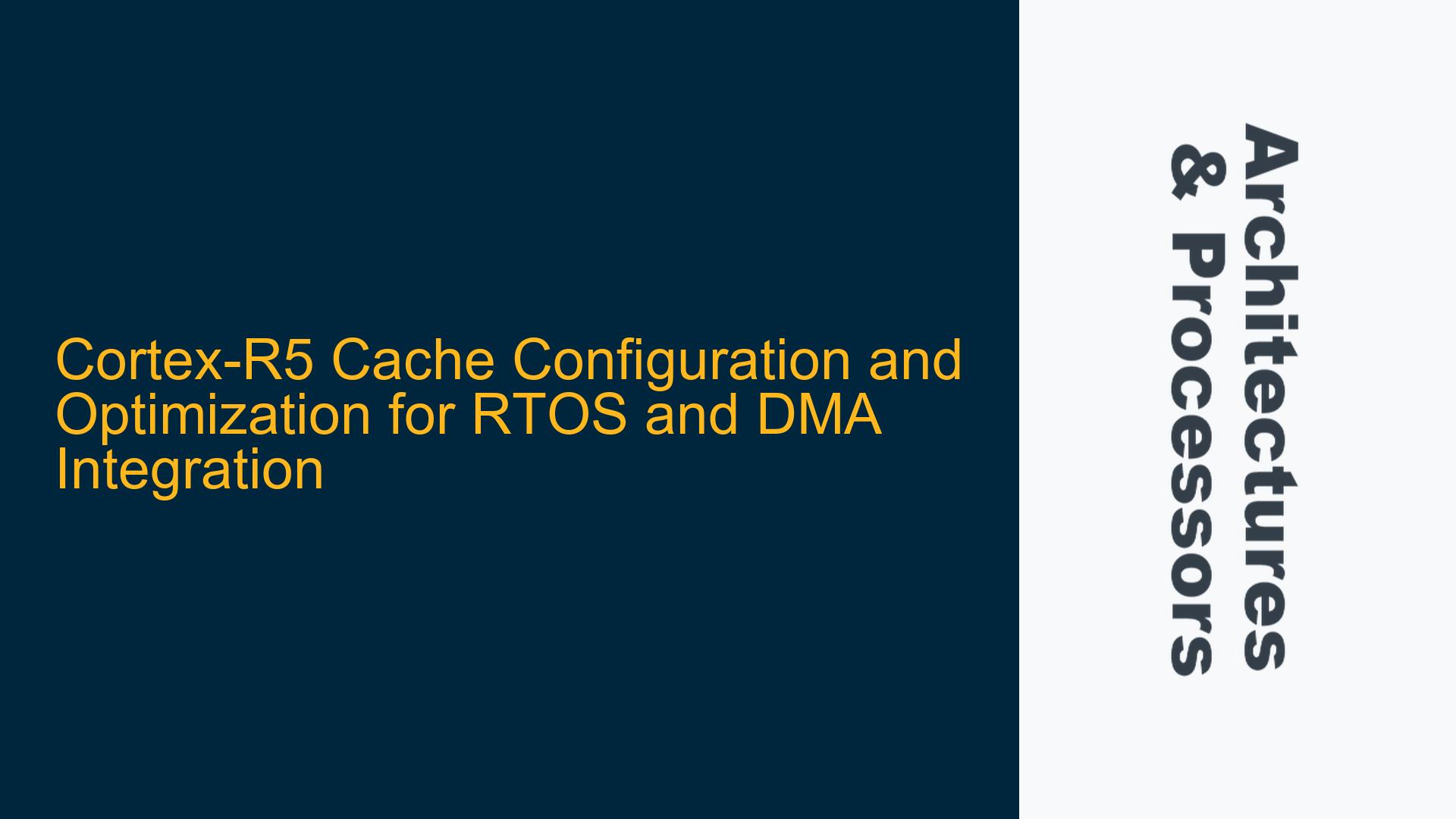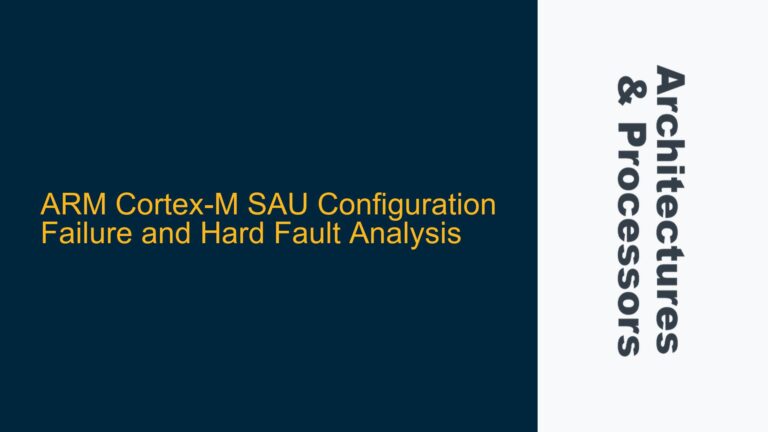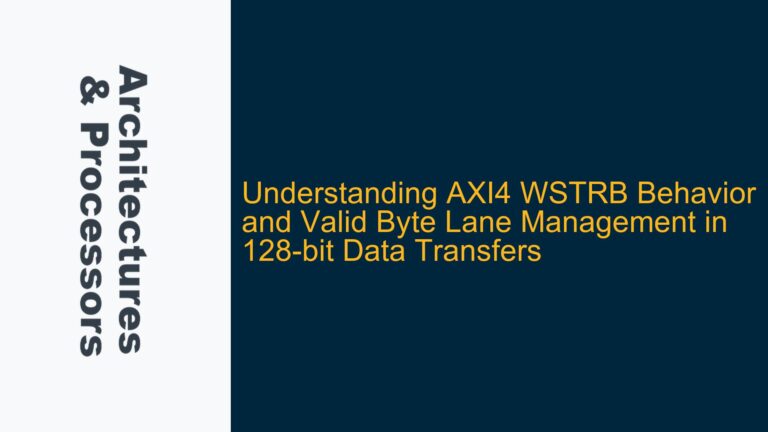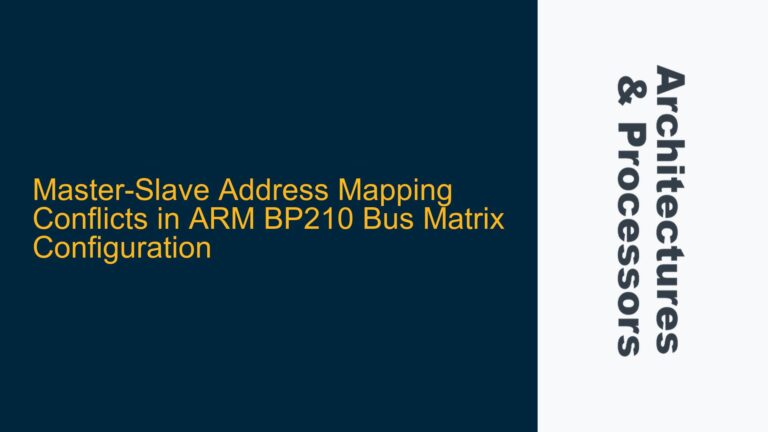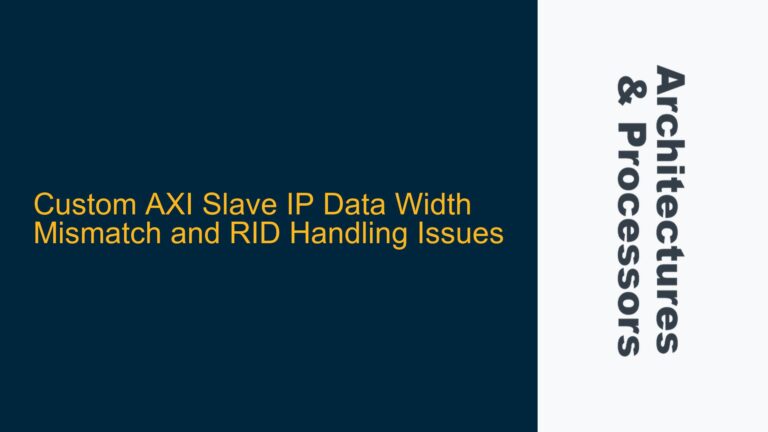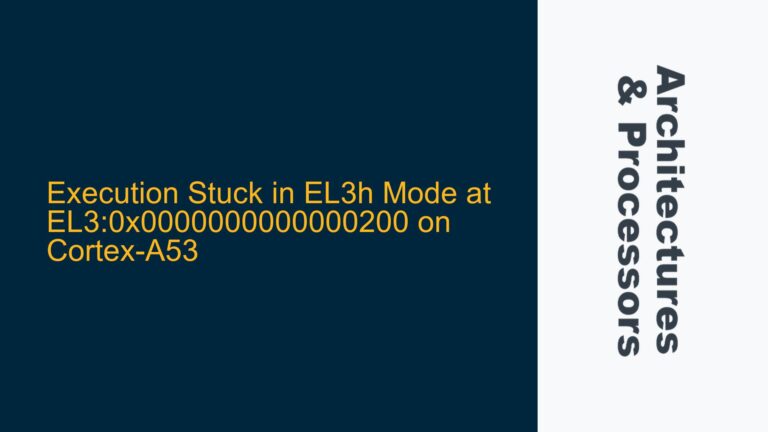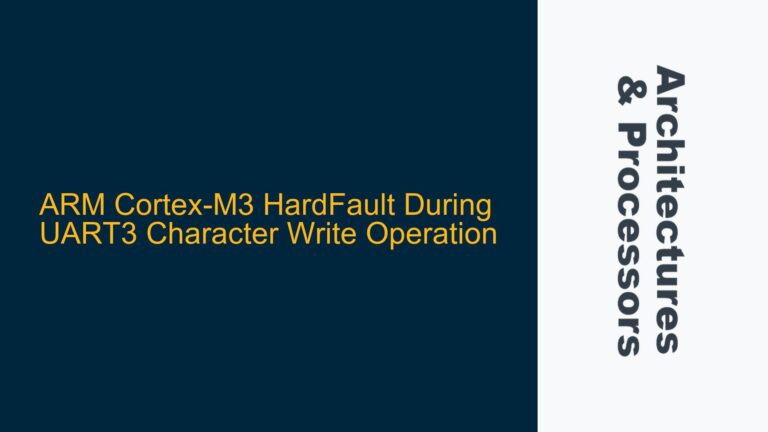Cortex-R5 Cache Initialization and Runtime Management
The Cortex-R5 processor, part of ARM’s real-time processor family, is designed for high-performance and deterministic real-time applications. One of its key features is the inclusion of separate Instruction and Data Caches (I-Cache and D-Cache), which significantly improve performance by reducing memory access latency. However, configuring and managing these caches, especially in systems involving Real-Time Operating Systems (RTOS) and Direct Memory Access (DMA), requires careful consideration to avoid performance bottlenecks and ensure data consistency.
Cache Initialization During Startup
The initialization of the Cortex-R5 caches during system startup is a critical step that sets the foundation for optimal system performance. The Cortex-R5 provides several configuration options for the caches, including cache size, associativity, and replacement policy. These configurations are typically set through the Cache Configuration Register (CCR) and the Cache Size ID Register (CCSIDR).
During the startup sequence, the following steps should be taken to initialize the caches:
-
Cache Enable and Configuration: The first step is to enable the caches and configure their parameters. This is done by writing to the System Control Register (SCTLR). The SCTLR contains bits to enable the I-Cache (bit 12) and D-Cache (bit 2). Additionally, the cache configuration parameters, such as cache size and associativity, are set through the CCR.
-
Cache Invalidation: Before enabling the caches, it is essential to invalidate them to ensure that no stale data is present. This is done using the Invalidate Instruction Cache (ICIALLU) and Invalidate Data Cache (DCIMVAC) operations. These operations ensure that the caches are in a known state before they are used.
-
Cache Maintenance Operations: After enabling the caches, it may be necessary to perform additional cache maintenance operations, such as cleaning or invalidating specific cache lines. This is particularly important when dealing with shared memory regions or when transitioning from a non-cached to a cached memory region.
-
Memory Barrier Instructions: To ensure that the cache configuration and maintenance operations are completed before proceeding, memory barrier instructions such as Data Synchronization Barrier (DSB) and Instruction Synchronization Barrier (ISB) should be used. These instructions ensure that all previous cache operations are completed before the processor continues execution.
Cache Configuration During Runtime
Once the caches are initialized and enabled, they can be dynamically configured and managed during runtime to optimize performance for specific workloads. The Cortex-R5 provides several mechanisms for runtime cache management, including cache locking, cache partitioning, and cache maintenance operations.
-
Cache Locking: Cache locking allows specific cache lines to be locked in the cache, preventing them from being evicted. This is particularly useful for critical code or data that must be accessed with low latency. The Cortex-R5 provides registers such as the Cache Lockdown Register (CLDNR) to control cache locking.
-
Cache Partitioning: Cache partitioning allows the cache to be divided into multiple partitions, each of which can be assigned to a specific task or process. This is useful in multi-tasking environments where different tasks have different cache requirements. The Cortex-R5 supports cache partitioning through the Cache Partitioning Register (CPMR).
-
Cache Maintenance Operations: During runtime, it may be necessary to perform cache maintenance operations such as cleaning or invalidating specific cache lines. This is particularly important when dealing with shared memory regions or when transitioning between different memory regions. The Cortex-R5 provides a range of cache maintenance operations, including Clean and Invalidate Data Cache (DCIMVAC), Clean Data Cache (DCCMVAC), and Invalidate Data Cache (DCIMVAC).
-
Memory Barrier Instructions: As with cache initialization, memory barrier instructions such as DSB and ISB should be used during runtime to ensure that cache operations are completed before proceeding. This is particularly important in real-time systems where timing is critical.
Cache Coherency and DMA Interactions
One of the most challenging aspects of cache management in the Cortex-R5 is ensuring cache coherency when DMA is involved. DMA allows peripherals to access memory directly, bypassing the CPU and caches. This can lead to cache coherency issues, where the data in the cache is not consistent with the data in memory.
DMA and Cache Coherency Issues
When DMA is used to transfer data to or from memory, the data in the cache may become stale if the DMA operation modifies memory that is also cached. This can lead to data corruption or incorrect program behavior. To avoid these issues, it is essential to ensure that the cache is properly managed during DMA operations.
-
Cache Invalidation Before DMA Read: Before initiating a DMA read operation, it is necessary to invalidate the corresponding cache lines to ensure that the DMA reads the most up-to-date data from memory. This is done using the Invalidate Data Cache (DCIMVAC) operation.
-
Cache Cleaning Before DMA Write: Before initiating a DMA write operation, it is necessary to clean the corresponding cache lines to ensure that any modified data in the cache is written back to memory. This is done using the Clean Data Cache (DCCMVAC) operation.
-
Cache Invalidation After DMA Write: After a DMA write operation, it is necessary to invalidate the corresponding cache lines to ensure that the CPU reads the most up-to-date data from memory. This is done using the Invalidate Data Cache (DCIMVAC) operation.
-
Memory Barrier Instructions: As with cache initialization and runtime management, memory barrier instructions such as DSB and ISB should be used to ensure that cache operations are completed before proceeding with DMA operations.
Cache Coherency with RTOS
In systems that use an RTOS, cache coherency must be maintained across context switches and task transitions. The RTOS is responsible for managing the cache state for each task, ensuring that the cache is properly invalidated or cleaned when switching between tasks.
-
Context Switching and Cache Management: During a context switch, the RTOS must ensure that the cache state is properly saved and restored for each task. This includes invalidating or cleaning cache lines as necessary to ensure that the new task has a consistent view of memory.
-
Task-Specific Cache Configuration: In some cases, it may be necessary to configure the cache differently for different tasks. For example, a task that requires low-latency access to critical data may benefit from cache locking, while a task that processes large amounts of data may benefit from cache partitioning. The RTOS should provide mechanisms for task-specific cache configuration.
-
Cache Coherency with Shared Memory: In multi-tasking environments, tasks may share memory regions. The RTOS must ensure that cache coherency is maintained for shared memory regions, particularly when DMA is involved. This may involve additional cache maintenance operations during task transitions or when accessing shared memory.
Optimizing Cache Usage for RTOS and DMA
To achieve optimal performance in systems that use an RTOS and DMA, it is essential to carefully manage the cache configuration and usage. This involves balancing the need for low-latency access to critical code and data with the need to minimize cache contention and ensure cache coherency.
Cache Configuration for Critical Code and Data
Critical code and data that must be accessed with low latency should be placed in tightly coupled memory (TCM) or locked in the cache. The Cortex-R5 provides ATCM (Instruction TCM) and BTCM (Data TCM) for this purpose. TCM provides low-latency access to code and data, bypassing the cache entirely. For code and data that cannot be placed in TCM, cache locking can be used to ensure that it remains in the cache.
-
ATCM for Critical Code: Interrupt handlers, exception handlers, and other critical code should be placed in ATCM to ensure that they can be accessed with low latency. This avoids the potential delay resulting from a cache miss.
-
BTCM for Critical Data: Data that is frequently accessed or requires low-latency access, such as audio or video processing buffers, should be placed in BTCM. This ensures that the data can be accessed quickly without the overhead of cache management.
-
Cache Locking for Frequently Accessed Code and Data: For code and data that cannot be placed in TCM, cache locking can be used to ensure that it remains in the cache. This is particularly useful for frequently accessed code and data that must be accessed with low latency.
Cache Configuration for DMA and RTOS
When using DMA and an RTOS, it is essential to carefully manage the cache configuration to ensure that cache coherency is maintained and that the cache is used efficiently.
-
Cache Partitioning for DMA: In systems that use DMA, it may be beneficial to partition the cache to separate DMA-related data from other data. This can help to minimize cache contention and ensure that DMA operations do not interfere with other tasks.
-
Cache Maintenance for DMA: As discussed earlier, cache maintenance operations such as cleaning and invalidating cache lines are essential when using DMA. These operations should be performed before and after DMA operations to ensure cache coherency.
-
RTOS-Aware Cache Management: The RTOS should be aware of the cache configuration and provide mechanisms for managing the cache state during task transitions and context switches. This includes invalidating or cleaning cache lines as necessary to ensure that each task has a consistent view of memory.
Performance Optimization Techniques
To further optimize cache usage in systems that use an RTOS and DMA, several performance optimization techniques can be employed:
-
Prefetching: Prefetching can be used to load data into the cache before it is needed, reducing the latency of memory accesses. The Cortex-R5 provides prefetch instructions that can be used to prefetch data into the cache.
-
Cache Line Padding: Cache line padding can be used to align data structures to cache line boundaries, reducing cache contention and improving cache performance. This is particularly useful for data structures that are frequently accessed by multiple tasks or DMA operations.
-
Cache-Aware Data Placement: Data placement in memory can have a significant impact on cache performance. Data that is frequently accessed together should be placed close together in memory to improve cache locality and reduce cache misses.
-
Cache Monitoring and Tuning: The Cortex-R5 provides performance monitoring counters that can be used to monitor cache performance and identify potential bottlenecks. These counters can be used to tune the cache configuration and optimize performance for specific workloads.
Conclusion
The Cortex-R5’s cache architecture provides significant performance benefits, but it also introduces complexity, particularly in systems that use an RTOS and DMA. Proper cache initialization, runtime management, and coherency maintenance are essential to avoid performance bottlenecks and ensure data consistency. By carefully configuring the cache, using TCM for critical code and data, and employing performance optimization techniques, it is possible to achieve optimal performance in real-time systems that use the Cortex-R5 processor.
